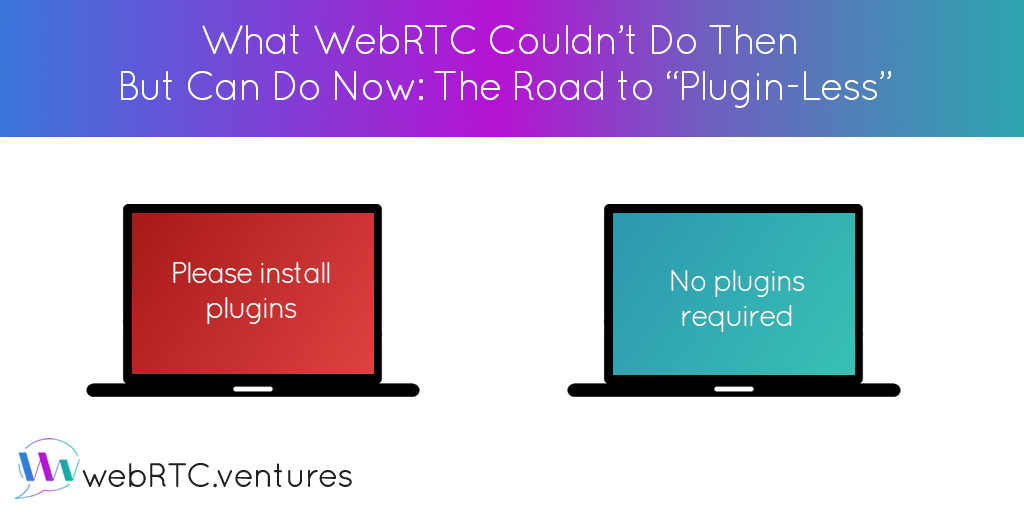Back in 2016, our founder discussed the three things WebRTC can’t do. At the time, we were receiving several questions from our customers about the use of plugins, so we wrote a blog post about the limitations of this young technology. Since then, the technology has significantly evolved. Here is the road to “plugin-less:” the things WebRTC couldn’t do then but can do now.
WebRTC is not completely plugin free
Three years ago, among major browser vendors, only Chrome, Firefox, and Opera had official support for WebRTC. With other browsers like Internet Explorer and Safari, users needed to install additional plugins in order to support real-time communication capabilities. This was also the case for iOS, where even supported browsers like Chrome and Firefox lacked WebRTC support.
This began to change a couple of years ago when Microsoft announced support for WebRTC on their new Edge browser. Soon after, Apple joined the party.
Both of these new implementations are working fairly well, and now it’s possible to establish a real-time call across most major browsers without needing a plugin.
WebRTC screensharing is not possible almost everywhere
Sharing your screen used to be complicated in any WebRTC application. This was mainly because, besides needing a plugin in order for it to work, it was only possible using Chrome and Firefox.
Earlier this year, the getDisplayMedia method was implemented in Chrome, Firefox, and Edge, and there are plans for implementing it on Safari, too. This method allows you to capture the contents of the whole display, or a portion of the display, as a media stream, similar to what happens with a camera on a typical video call. All of this can be done without plugins. While this functionality is not quite there yet, it creates the foundation for a completely plugin-free performance in the near future.
Regarding point #3 of our original post, WebRTC still doesn’t allow remote control of your desktop. This isn’t a limitation, though; it’s simply a completely different technology and use case.
Conclusion
WebRTC as a technology is evolving and maturing quickly. Little by little, the pain points that were presented a few years ago are being resolved. The two major advancements discussed in this article are great examples of that, and they’re the first steps to a completely “plugin-less” implementation.
If you’d like an application that has these cool new features, contact us! We’ll be happy to help.




